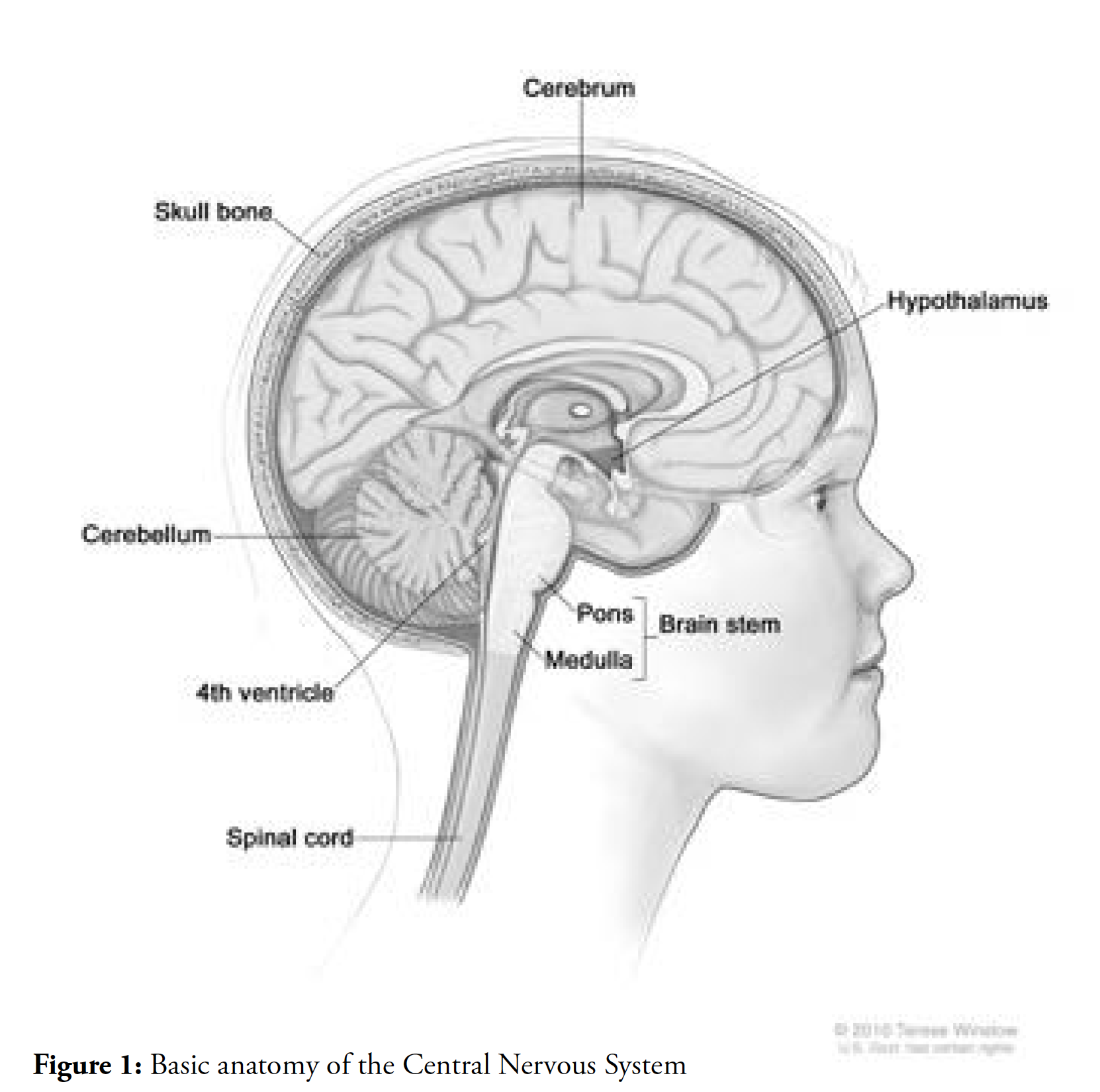
What Does DIPG Mean?
Diffuse Intrinsic Pontine Glioma is a type of brain tumor. This tumor is considered diffuse because it is not contained within a solid lump, but rather is spread throughout nearby tissue. Intrinsic means that the tumor is inside the brainstem, rather than outside it. Pontine is a description of where the tumor is found: the pons, a part of the brainstem that controls many basic functions like breathing, sleeping, swallowing and regulating the heart rate. This area of the brain is also a pathway where many important signals pass to and from the brain to the rest of the body. Gliomas are brain tumors that arise from glial cells, the cells that protect and support the neurons in the brain.
DIPG brain tumors are most common in children ages 7 to 9, but they can occur at any age.
What Are the Symptoms?
DIPG brain tumors are usually fast growing, and the symptoms can arise suddenly. They can include:
- Difficulty speaking
- Problems with walking or balance, especially on one side of the body
- Difficulty chewing and swallowing
- Vision problems
- Drooping of the eyelid or face, especially on one side
- Nausea and vomiting
- Persistent headaches, especially in the morning
How Is It Treated?
There is no known cure for DIPG, and treatment options for DIPG brain tumors are very limited. Because of the tumor’s location in the brain stem, where it’s surrounded by and mixed with healthy tissue that’s critical for survival, it is not possible to remove a DIPG brain tumor with surgery. Researchers have tried many chemotherapies, or drugs, to treat DIPG, but none have been successful. Radiation therapy is the only treatment that is proven to shrink the tumor, but it is still not a cure.
“The problem with operating on diffuse intrinsic pontine gliomas (DIPGs) is captured immediately by the name itself—they are diffuse, they are intrinsic, and they are in the pons.”
– Understanding the Journey: A Parent’s Guide to DIPG, available for free to parents
The recommended treatment for most children with DIPG is a combination of radiation and anti-inflammatory steroids, which can help manage some of the symptoms of the tumor by reducing the swelling. Unfortunately, because of the aggressive nature of the tumor and the lack of treatment options, most children do not survive more than two years from diagnosis.
Some families may choose to enroll their child in a clinical trial for DIPG. Clinical trials are an important phase of childhood cancer research, and they can be a way for a child to try a new treatment that shows promise but hasn’t been proven effective yet. Your child’s care team can help you understand your child’s treatment options, including whether they are eligible for a clinical trial.
Why Tissue Donation Matters
“Research to find new therapies has stalled in the past, in part, because scientists had very little tumor tissue to analyze.”
No parent wants to think about what to do after their child’s death. Tissue donation is an emotional subject, and yet the future of DIPG treatment depends on parents considering this option. You can learn more about tissue donation with the following links:
- Leaving a Legacy
- Scientists Tackle Lethal Childhood Brain Cancer
- Overcoming Autopsy Barriers in Pediatric Cancer Research
We Can Help
If you are the parent of a child with DIPG, ACCO is here for you. We have resources designed for your specific situation. Get in touch and we’ll provide a copy of our Parent’s Guide to DIPG book and other resources to help you navigate your experience, free of charge. You can also click the image below to read the book online right now.
Understanding the Journey: A Parent’s Guide to DIPG
edited by Ruth I Hoffman, MPH
A 368-page comprehensive resource that guides the family whose child has been diagnosed with a diffuse intrinsic pontine glioma through this difficult diagnosis. Written by pediatric neuro-oncology experts and by parents of children with DIPG, this resource offers in-depth medical information as well as and emotional understanding and guidance.

ACCO offers a variety of free resources for cancer families, from online programs to educational toys. Check out our resources page to learn more.
This unique resource was co-written by Sandy Smith and ACCO’s CEO, Ruth Hoffman, along with other ACCO resources: “Advocacy: Helping Others Understand What Children with Cancer Need” and “A Parent’s Guide to Enhancing Quality of Life in Children with Cancer.” Sandy’s son, Andrew fought a 25 month long battle with DIPG. Thanks to his tissue donations, his legacy and continues to shape how DIPG is researched.



